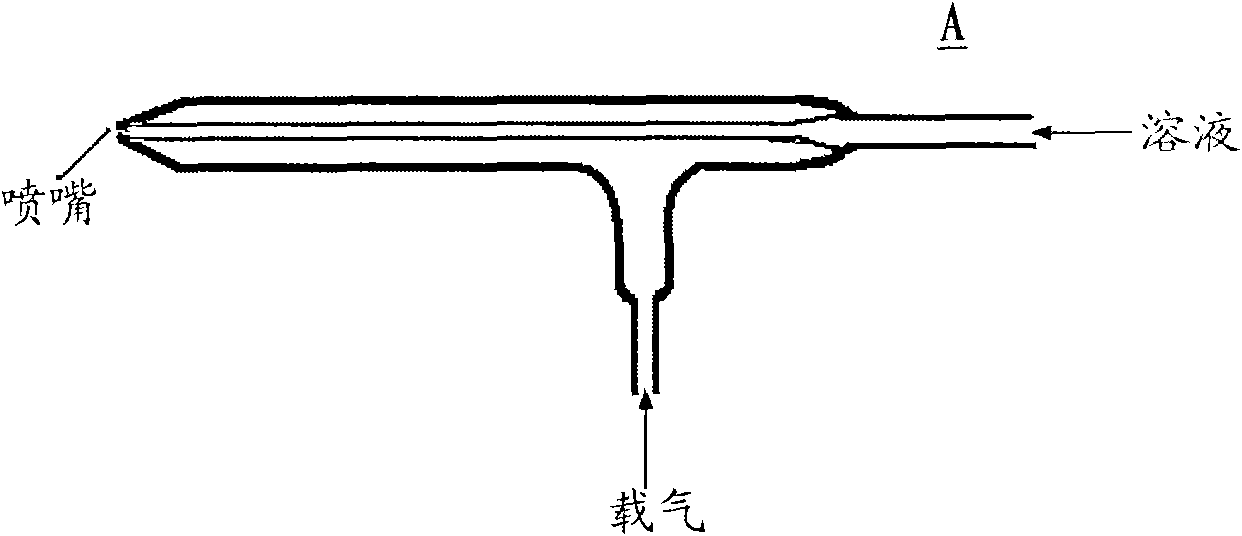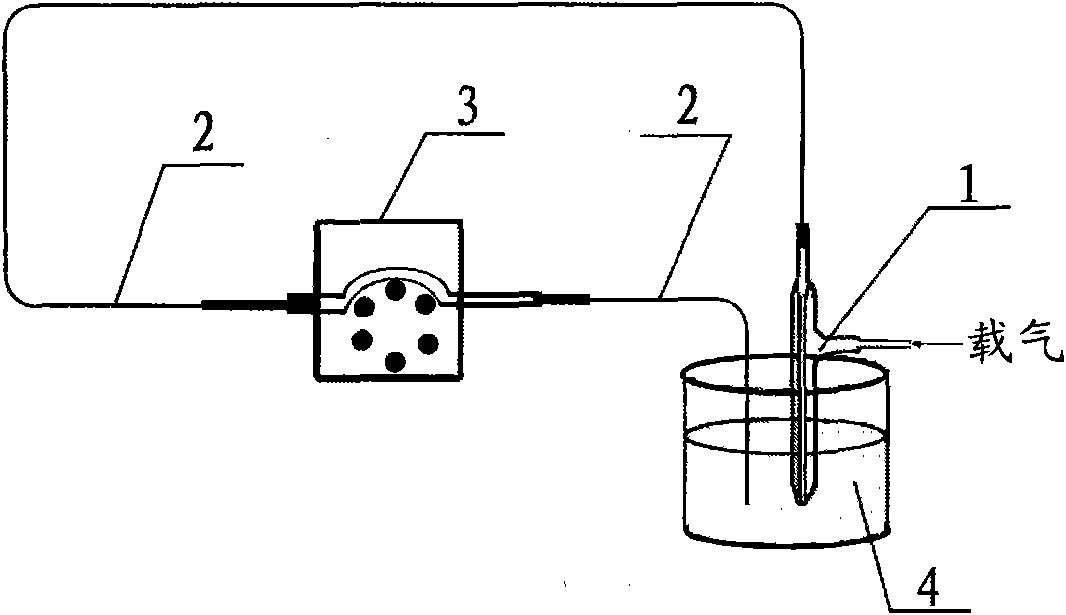Method for removing obstruction of atomizer
A technology of atomizer and blockage, applied in the direction of injection device, etc., can solve the problems of easily damaged inner tube, poor cleaning effect, long time consumption, etc., and achieve the effect of high safety, efficiency and good use effect.
- Summary
- Abstract
- Description
- Claims
- Application Information
AI Technical Summary
Problems solved by technology
Method used
Image
Examples
Embodiment 1
[0030] Embodiment 1, with reference to figure 1 , figure 2 and image 3 .
[0031] The first technical solution of the present invention is a method for removing blockages in an atomizer by using a cleaning solution. The technical solution is to use the atomizer 1, the sampling capillary inner tube 2, the peristaltic pump 3 and the connecting pipeline on the original equipment in the original normal working connection state to replace the original sample solution with a cleaning solution. A method of removing clogs by using solution 4. Use the following cleanup methods during operation:
[0032] The composition of the blockage (or sample) is: determined by Na 2 CO 3 、HBO 3 V of mixed alkaline reagent melt digestion 2 o 5 blockages generated during the sample solution; first pull out the atomizer 1 from the atomization chamber of the original testing instrument, and put the nozzle end of the atomizer into the container containing the cleaning solution 4; choose 25mL f...
Embodiment 2
[0034] On the basis of embodiment 1, the component of embodiment 2 blockage (or sample) is: measure with Li 2 B4 o 7 For the blockage produced when melting and digesting the steel alloy sample solution, 30mL concentrated hydrochloric acid (HCl) and 10mL concentrated nitric acid (HNO 3 ), then add 90mL of distilled water and mix evenly, and heat the mixed solution to 50°C; the rotation speed of the peristaltic pump 3 is 120 rpm, and use the peristaltic pump 3 to squeeze the cleaning solution 4 into the inlet of the atomizer 1. Sample capillary inner tube 2, set the pressure of the atomizing airflow to 25psi; blow atomizing airflow into the atomizer 1, make the cleaning solution 4 pass through the sampling capillary inner tube 2 at a high speed under the negative pressure generated by the high-speed airflow Spray from one end of the atomizer nozzle, so as to wash and clean the blockage in the atomizer at a high speed, so that the cleaning solution can fully and effectively cont...
Embodiment 3
[0036] On the basis of embodiment 1, the component of embodiment 3 blockage (or sample) is: measure with K 2 S 2 o 7 For the blockage produced when the ore sample solution is melted and digested, 40mL of concentrated hydrochloric acid (HCl) and 20mL of concentrated nitric acid (HNO 3 ), then add 100mL of distilled water and mix evenly; the rotation speed of the peristaltic pump 3 is 160 rpm, use the peristaltic pump 3 to squeeze the cleaning solution 4 into the sampling capillary inner tube 2 inside the nebulizer 1, and use the mist The pressure of the atomizing air flow is 40 psi; the atomizing air flow is blown into the atomizer 1, so that the cleaning solution 4 passes through the sampling capillary inner tube 2 at a high speed under the negative pressure generated by the high-speed air flow and is ejected from one end of the atomizer nozzle. In this way, the blockage in the atomizer is washed and cleaned at a high speed, so that the cleaning solution and the blockage can...
PUM
 Login to View More
Login to View More Abstract
Description
Claims
Application Information
 Login to View More
Login to View More - R&D
- Intellectual Property
- Life Sciences
- Materials
- Tech Scout
- Unparalleled Data Quality
- Higher Quality Content
- 60% Fewer Hallucinations
Browse by: Latest US Patents, China's latest patents, Technical Efficacy Thesaurus, Application Domain, Technology Topic, Popular Technical Reports.
© 2025 PatSnap. All rights reserved.Legal|Privacy policy|Modern Slavery Act Transparency Statement|Sitemap|About US| Contact US: help@patsnap.com



